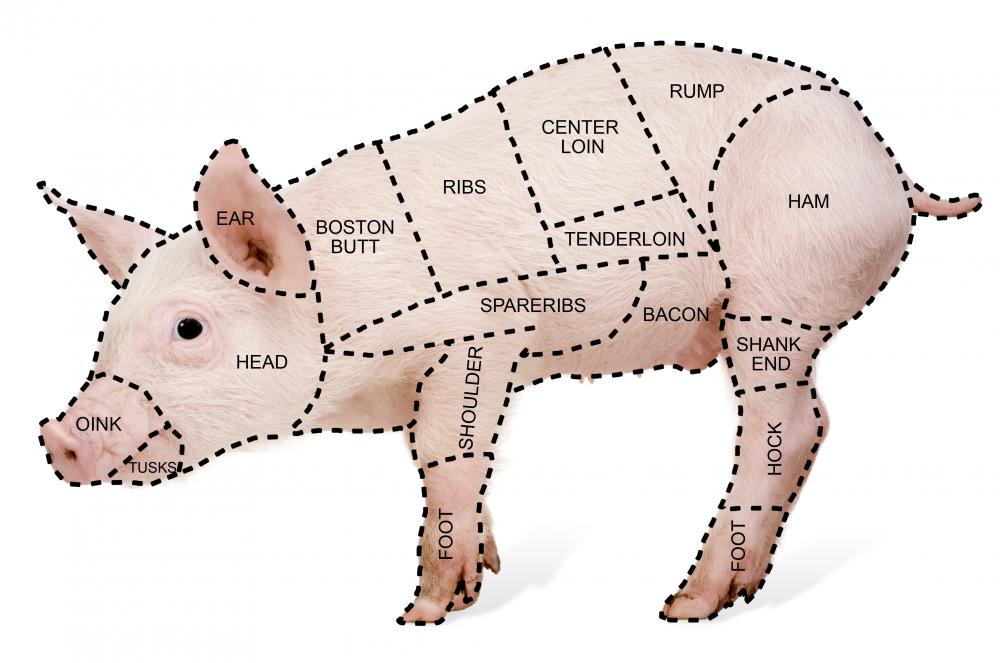At WiseGEEK, we're committed to delivering accurate, trustworthy information. Our expert-authored content is rigorously fact-checked and sourced from credible authorities. Discover how we uphold the highest standards in providing you with reliable knowledge.
What Are the Best Tips for Pickling Pork?
Before refrigeration, pickling pork used to be a method of preserving the meat throughout the fall and winter months, especially in warmer areas like the southern United States. The salt and spiciness of the brining liquid discouraged the growth of bacteria, making it safe to eat for a longer time. This pickling process also often made the meat juicy and succulent. Today, pickling pork is done as much for flavor as it is for preservation. Cooks should typically choose the freshest meat for pickling, as well as a combination of spices and liquids that they’ll enjoy eating later.
Fresh meat often works best for pickling because it has a rich flavor that the brine is unlikely to overpower. Using fresh meat also eliminates the worry that bacteria has already begun to grow. The pickling brine in these cases only has to prevent bacteria growth, not stop growth that is already happening. For this reason, fresh pickling pork often lasts longer than pork that has been refrigerated for a while before the brining process begins.

Hog farms and reliable butchers are among the best places to get pork for pickling. They often allow the cook to choose from a wide selection of pork pieces, serving up only the freshest meats. Shoulder, haunch, and back roasts often work well as pickling pork because they have a lot of meat on them and often become succulent when marinated. The meat should be bright red and smell sharp and rich, not metallic or sour.

The cook then has to choose brining spices. Most pickling pork recipes call for vinegar, salt, mustard seed, bay leaves, peppercorns, garlic, allspice, cloves, hot pepper flakes or hot sauce, and onions. All of these ingredients typically have very strong, acidic flavors that work well for preserving meat. Cooks may use all of the spices from the above list, or just combine their favorites. Bay leaves, for instance, may upset sensitive digestion and can be omitted from the recipe without impacting the flavor.

Spices should typically be fresh as well. Whole garlic cloves and chopped onions are usually preferred over garlic or onion powders because the latter don’t contain much acid. All dried and powdered spices should have a very strong scent and bright colors. Apple cider or white vinegar may be used, but balsamic often overwhelms the other flavors and should be used very sparingly, if at all.
The pickling brine is typically brought to a boil in a large stewpot before the pork is added. Foam usually forms on the top of the liquid, and it should be skimmed away and discarded so the mixture doesn’t boil over. After about 5 minutes of boiling, the brine should be refrigerated overnight. The pork is then added to the cold liquid and must be completely covered by the brine. The cook may pickle the pork for up to four days, stirring it every few hours to prevent air pockets from forming.
AS FEATURED ON:
AS FEATURED ON:













Discuss this Article
Post your comments